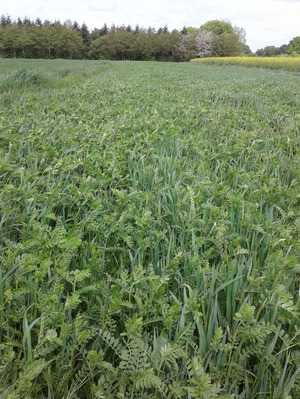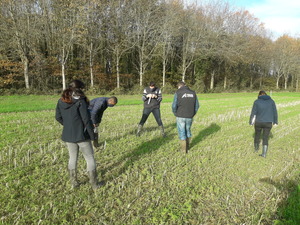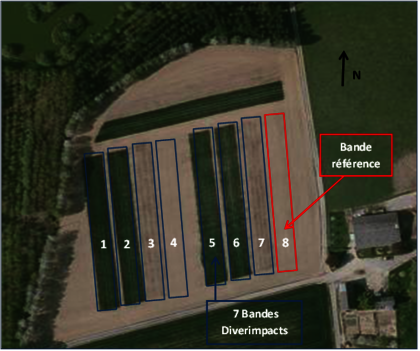Combination of diversification strategies in mixed systems to improve services
Field experiment 5, France


Trial location and duration
Location: France, Saint-Fort (53) - 47°47'52.2"N 0°42'12.8"W
Trial duration: 2017-2027
Objectives and research question
In the north-west of France, farms with livestock (mainly dairy cows) are becoming even bigger, with standardised crop production to meet their needs for forage (silage maize production) and straw. Due to the size of farms, there is also space for arable crops for to supplement income.
However, the environmental issues (water quality, lack of biodiversity, etc.) and technical issues such as weed pressure and poor protein autonomy lead to a desire to re-design the systems to 1) reduce pesticide use by at least 50%, to reach the French Ecophyto goal, and 2) promote forage and protein autonomy while maintaining the semi-net margin and the amount of work.
Diversification, including rotation, intercropping and multiple cropping, is an effective way to reach these objectives. The field experiment tests a diversified rotation in comparison to a non-diversified reference system.
Experimental design
The trial has 8 plots (7 for innovative systems and 1 for the reference system), each of which is 12 x 100m (Figure 1). There is no spatial replication but 4 replications of measurements in each plot. The crop rotation is shown in figure 4.

Main findings and highlights
- The objective of reducing pesticide use is achieved with combination of strategies at the system level and crop level managed with a set of decision-making rules
- Reducing the use of pesticides, especially herbicides, has drawbacks on other such as increased labour and fuel consumption;
- Increased forage production and protein autonomy at the system level with the introduction of alfalfa, mixing of oat and vetches as multiple crops and over-seeding in alfalfa
- A combination of strategies (i.e. introducing hemp and multiple cropping before spring crops) is useful to reduce weed pressure;
- Combination of practices evolve each year to weather conditions, available equipment, knowledge and previous results.
Main challenges
- Limiting weed pressure and reducing pesticide use: Some failures have increased weed pressure (intercrop of spring pea and barley, intercrop of alfalfa and sunflower)
- Dealing with decreasing economic results due to reduction of dominant species


 tap and then scroll down to the Add to Home Screen command.
tap and then scroll down to the Add to Home Screen command.